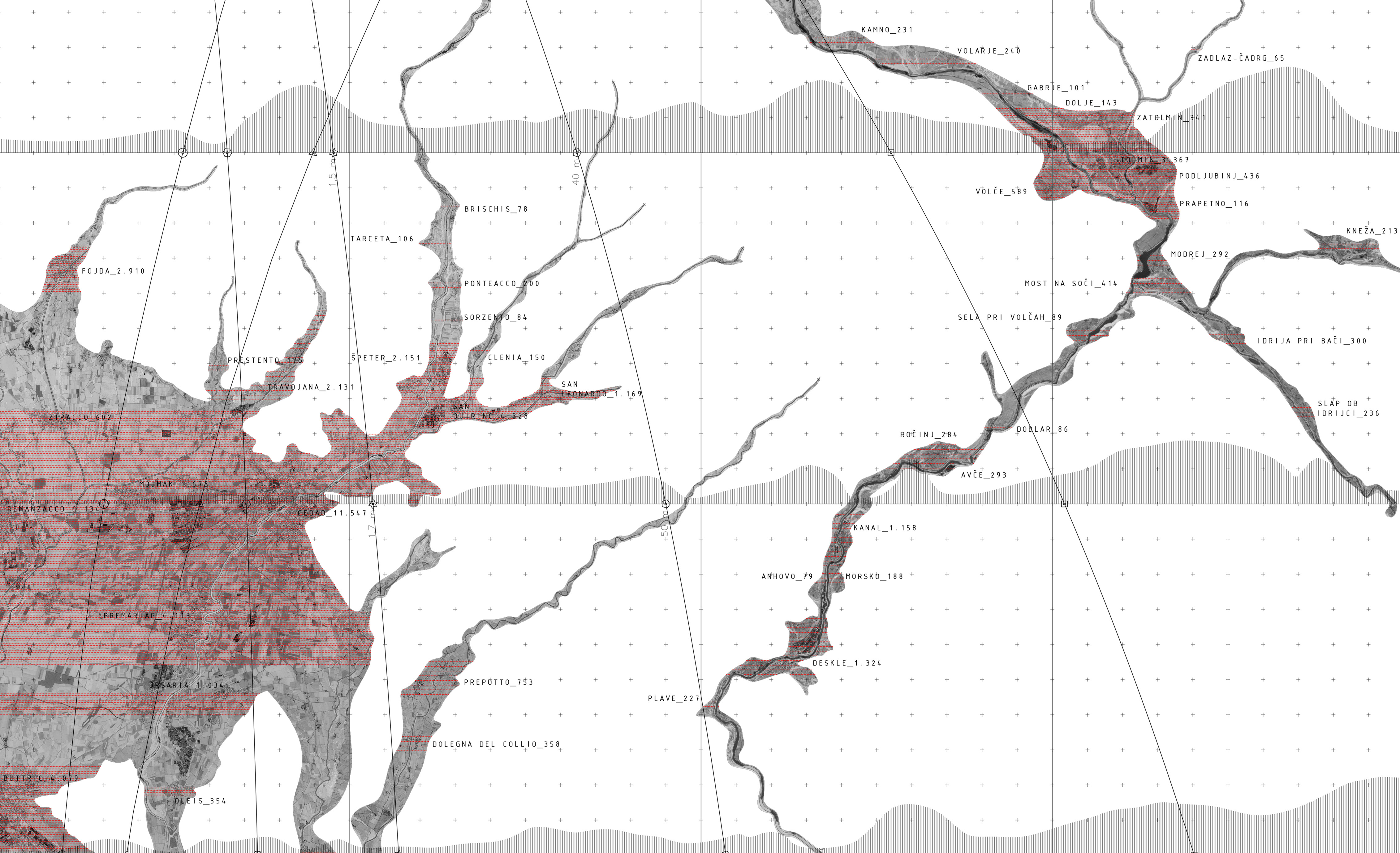
Alternative futures for the Soča Region, Slovenia
Studio I (Planning and Design), Visual Communications
University of Ljubljana
University of Ljubljana took part in the International Geodesign Collaboration (lead by Carl Steinitz) researching how landscape planning can help address future challenges of contemporary society. The aim of our case study was to plan the development in a highly naturally preserved but increasingly touristically burdened region of Soča Valley, Slovenia, in the uncertain times of pending climate breakdown and increasingly contested political setting. The main approach was exploration of strategic spatial development scenarios within a set of common global and specific local driving forces. The scenarios were defined according to the level and speed of adoption of socio-technological innovations in response to expected, but uncertain, future problems. Five scenarios were developed in two time sections – early and non-adopter for 2035, and early, late and non adopter for 2050. The students were tasked with developing eight systems ranging from energy, residential, infrastructure and industry to green infrastructure, agriculture, mixed use and tourism. Negotiation was used as a design tool, where student adopted the roles of advocates of their system. This process resulted in well-balanced and comprehensive future scenarios, described by a set of projects in different scales – from strategic planning to detailed design. These projects addressed a variety of topics including revitalization of abandoned settlements and agricultural holdings, expansion of residential areas, design of urban open space and tourist facilities, placement of photovoltaic cells in the landscape and bridging of the ecological obstacles on the Soča river. The Visual Communications course taught the students to explore how complex data can be leveraged to support arguments and provide knowledge for decision-making.
